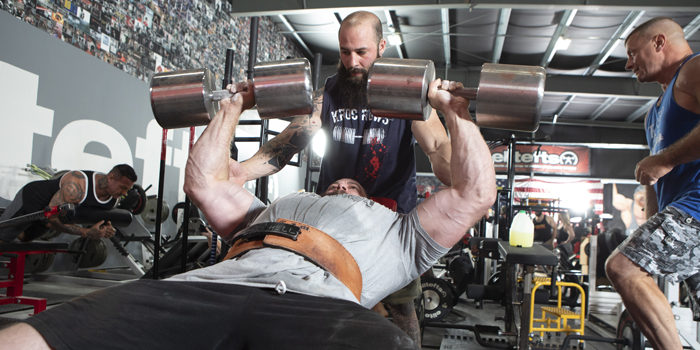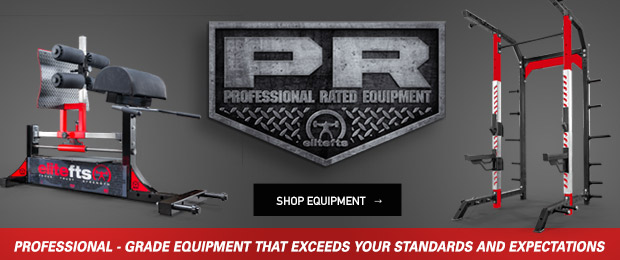
There are waves of disinformation in the fitness industry. Some of them are relatively harmless or are just exaggerations of relevance to anyone but top athletes. Examples include diet fads that ignore calorie intake and most supplement recommendations that aren’t caffeine-, creatine-, or protein-related.
Then there is the harmful stuff—steroids and other performance-enhancing drug recommendations that can produce long-term undesirable effects.
In the middle between harmful and harmless is the stuff that causes frustration and plateaus despite one’s best efforts. At the top of this “middle” list is the idea that one can always work harder.
Origins
I’m a millennial. My generation (and Gen Z) have spent our lives refuting the argument that we’re entitled and have no clue what work ethic is.
There’s a generational belief that the ones to follow don’t push as hard as the previous one. It isn’t just generational, though. There are genetic freaks that believe it was the six months of “hard work” that allowed them to platform at their first meet.
RECENT: Can We Just Let Pee Pee Be?
Steroid users forget how hard it was to top themselves out naturally—if they even waited that long.
The prevailing thought that success only presents itself to those most worthy is a lie when the playing field isn’t a field; it’s more of a mountain range.
Individual Differences and Real-Life Case Studies
I was a mildly chubby kid early on in high school. Puberty hit me in the worst way back in the 90s, and by the time I was 13 or 14, I was girl-crazy AND had a terrible case of gynecomastia. The summer after tenth grade, I began my fitness journey with a starvation diet, tons of push-ups, and long-distance running. I dropped about 35 pounds of mostly fat in a few months and found my abs.
The gyno didn’t go away, and my pecs got bigger. I found something else out, though—I was fast.
At the beginning of summer, I couldn’t complete a mile. By the end, I could run 10-12 7:30ish miles in a row and I wasn’t even pushing it. I felt like I could have run forever at this pace. I had no idea what I was doing.
Although I’m currently devoted to powerlifting, I still get back into running every few years. Each time I start slow, but I can push myself to 7:00 miles for distance after a few weeks. In 2014, I ran a 1:31 half-marathon after four months of dedicated training following a four-year layoff.
Almost three years ago, I took on a client whose goal was to lose weight and run a 10k obstacle course race. With most of my experience and knowledge base being with powerlifting, I relied mostly on my own running journey to anticipate his progress. His weight training regime was dumbbell-based, minimalistic, and low-to-moderate volume. His running training was a bit more aggressive but reasonable. His weights were jumping in the gym, and his physique improved by leaps and bounds. After approximately five months or so, he was barely at a nine-minute mile.
What was going on?
His speed should have naturally improved, right? Could it be that he wasn’t trying hard enough? Why was his physique able to improve on so little but not so much with the running?
Most of the coaches on Instagram would tell you that he wasn’t trying hard enough or that he was lying about completing all of his training.
They would be wrong, though. We addressed some issues, and he now consistently runs 7:00 – 7:30 miles.
How did we do it? I slowed him down.
What Exactly Am I Implying?
Not to contradict myself entirely, but I believe that many people in the gym aren’t working hard enough. Some people are never tired or sore, or don’t even have an idea of what their 1RM is because they’ve never pushed hard enough. If this is you and you aren’t progressing, consider pushing harder and following a tried-and-true routine.
If your muscles are sore and you’re eating and sleeping enough, you’ll grow and get stronger.
My client wasn’t able to push himself harder to a faster pace. It wasn’t until I prescribed restrictive paces that his mileage went up, and his overall speed improved. He had to stop pushing so hard because his body only knew the wall.
I’m writing this article in response to my own experience of doing the same with powerlifting. For literal years, I hadn’t known the value of easy sets. YouTube and Instagram told me that I had to push harder against my better judgment, which I did. I thought that I could get my progressive overload by increasing the load at RPE10, except it didn’t increase.
It regressed, I got injured, and then I’d reduce load to rehab, and my 1RMs would skyrocket. I’d do a peak, and they’d regress again, or I’d get injured again and repeat. If there were easier loads, they were done at extreme volumes. I never let myself off the hook if I could do even a single rep more.
In May of this year, I totaled 1405 in a mock meet during a rare healthy streak. Later in the year, I failed to crack 1200.
I did up to 30-40 one to three rep sets per workout at a high intensity four times per week. I took regular deloads, but I was still always beat up. My strength was completely unpredictable from session to session. I had a hard time sleeping at night and keeping my weight up.
Frustrated and desperate for answers, I turned to the work of Stuart McRobert and Marty Gallagher.
Both have detailed examples of a different kind of work hard—the idea of working appropriately hard. McRobert advocates both minimal sets and frequencies but done with maximal intent and effort. He advocates against high volumes and training when not fully recovered, as this will potentially lead to injury and plateaus. Gallagher is somewhat of a training historian and has detailed both high volume and low volume routines with the idea that one must do what works for their schedule and personality.
5/3/1-Inspired Routine
I’m not going to mess it up this time, hopefully. I created a 5/3/1 inspired routine for myself with minimal volume, three times per week. It looks like this, with yoga-type stretching 4-5 days per week before bed:
Day 1 (Sunday):
- Squat 5/3/1+ @ 8
- Backdown sets of the weight/reps used on the second set – 3 sets
- Bench 5/3/1+ @ 8
- Backdown sets of the weight/reps used on the second set – 3 sets
- Weighted Chins – 5 sets @ 8-9
Day 2 (Tuesday):
- Deadlift 5/3/1+ @ 8
- Backdown sets of the weight/reps used on the second set – 3 sets
- Overhead Press 5/3/1+ @ 8
- Backdown sets of the weight/reps used on the second set – 3 sets
- Rotator Cuffs – 2 sets with light weight for high reps
- Calves – 2 sets with light weight for high reps
- Curls / Triceps Extensions – 2 supersets of 8-15
Day 3 (Thursday):
- Repeat Day 1
Saturday:
- Cardio
I’m only doing five hard sets of the powerlifts per week. I’m (embarrassingly) gassed after those sets. My numbers are improving, my sessions are finished in under an hour, and I feel amazing.
If you aren’t improving and feel like you’re pushing as hard as possible, try backing off to see if it works.
Matthew Newberry is an Automation Engineer and amateur powerlifter. He’s a former competitive distance runner and single father of two kids. He was a fitness coach in the US Air Force and currently provides coaching for runners and gen pop.











1 Comment